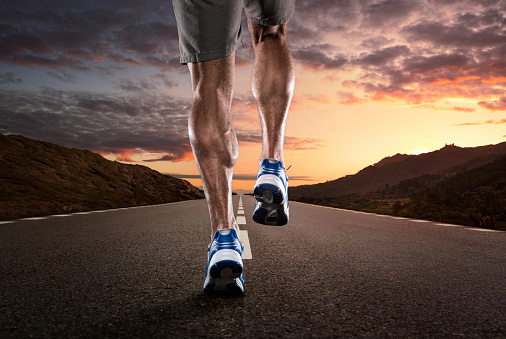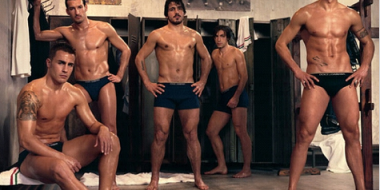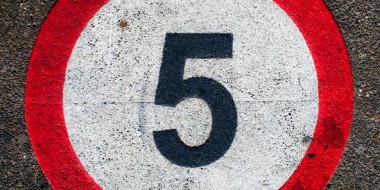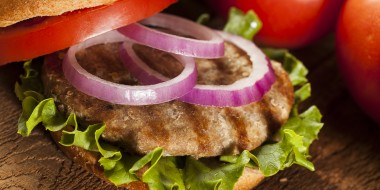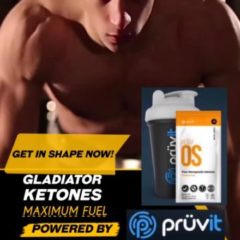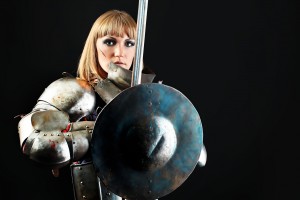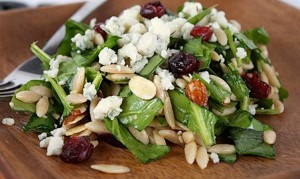By a proverbial show of hands, how many of you have cranky, irritated, or just plan painful knees?
Kinda puts a damper on your training style, right? We see this in the gym all the time. Everyone from our high school athletes to middle-aged soccer moms come strolling into the gym with knee pain. For some, it’s just painful with certain motions like squatting.
For others, it’s just a consistent nagging pain that makes everything they do a challenge. I’m here to deliver some good news, though: You can still build some gladiator-quality legs without becoming the orthopedic surgeon’s best friend. Before we get into what you need to do, let’s explore some of the reasons why your knees feel like they’re filled with gravel. Aside from some type of outright physical injury like sprained or torn connective tissue, the most common problems are inflammation, poor tracking, and/or muscular imbalances.
Inflammation
 Think of this like a low-grade swelling. It’s probably not enough that your knee feels like it’s getting bigger, but it’s definitely causing discomfort and pain. Addressing the tracking and muscular balance around the knee can help alleviate this inflammation. You may also need to look at some supplemental solutions to the problem as well. Omega-3s found in fatty fish, grass-fed meats, and fish oil supplements are all potent anti-inflammatories. Other popular joint supplements almost unanimously include the ingredients glucosamine and chondroitin, which are supposed to help rebuild cartilage and connective tissue. I like to take it step further and grab something that includes some anti-inflammatory herbs such as turmeric and/or boswelia. The brand I personally use is Driven Nutrition’s Omega Drive and Supple Flex.
Think of this like a low-grade swelling. It’s probably not enough that your knee feels like it’s getting bigger, but it’s definitely causing discomfort and pain. Addressing the tracking and muscular balance around the knee can help alleviate this inflammation. You may also need to look at some supplemental solutions to the problem as well. Omega-3s found in fatty fish, grass-fed meats, and fish oil supplements are all potent anti-inflammatories. Other popular joint supplements almost unanimously include the ingredients glucosamine and chondroitin, which are supposed to help rebuild cartilage and connective tissue. I like to take it step further and grab something that includes some anti-inflammatory herbs such as turmeric and/or boswelia. The brand I personally use is Driven Nutrition’s Omega Drive and Supple Flex.
Tracking
Primarily the knee is what’s called a hinge joint. Its primary motions are flexing and extending with a small amount of rotation. This is why tracking, or alignment, of the knee is super important. If our knees are caving in or bowing out, we’re going to be putting unnecessary pressure on the joint at angles it wasn’t meant to handle. Typically, this issue doesn’t cause damage the first time it happens. It’s going to be a slow erosion of the joint over time that leads to injury from simple things like stepping off the curb and landing wrong. The easiest way to improve the tracking of the knee is to fix your posture. When standing or walking, make sure you squeeze your butt just a little bit. We’re not making diamonds here. Just hold a little tension. This will pull the knees back to center if they’re collapsing. Also, stop walking like a duck. This will help bring things back the other way if you’re a bit bow legged.
Muscular Imbalance
 When we’re talking knees and muscular balance, we’re talking about the quads, hamstrings, glutes (butt), and adductors (inside of the legs). Typically what you see are strong quads and adductors in relation to the hamstrings and glutes. This usually translates into lots of force being piped through the knee and kneecap during movements such as squats. The goal is to get the hips and hamstrings up to par with the other muscles and re-pattern some of our lifts so that we actually include those muscles. That’s right—the fact that you can’t squeeze your butt is a big part of why your knees (and most likely your lower back) hurt. Bonus bit: One thing that has helped many of my clients is just a simple neoprene knee sleeve. They will give the knees some compression as well as help warm them up faster. Odd Haugen and Power Belly Gear both make some top-notch sleeves. They’ll be more expensive than what you find at the local sporting goods store, but they’re higher quality and will last far longer.
When we’re talking knees and muscular balance, we’re talking about the quads, hamstrings, glutes (butt), and adductors (inside of the legs). Typically what you see are strong quads and adductors in relation to the hamstrings and glutes. This usually translates into lots of force being piped through the knee and kneecap during movements such as squats. The goal is to get the hips and hamstrings up to par with the other muscles and re-pattern some of our lifts so that we actually include those muscles. That’s right—the fact that you can’t squeeze your butt is a big part of why your knees (and most likely your lower back) hurt. Bonus bit: One thing that has helped many of my clients is just a simple neoprene knee sleeve. They will give the knees some compression as well as help warm them up faster. Odd Haugen and Power Belly Gear both make some top-notch sleeves. They’ll be more expensive than what you find at the local sporting goods store, but they’re higher quality and will last far longer.
5 Knee-Friendly Movements for Strong Wheels
#1- Romanian Deadlifts: The key here is to hinge the hips straight back. You should feel a big stretch through the back of your legs. Don’t let the weights drift forward. You can use dumbbells, barbells, sandbags, kettlebells, or just your body weight to get warmed up.
#2- Step Ups: This is one that’s traditionally hard on the knees. By far the most common mistake is that most trainees end up shoving their knee out over the toes and try to keep their torso vertical. This eliminates almost all the drive we could and should be getting from the glutes and hamstrings. From the start position, lean the shoulders forward, push the hips back, and get a little bump from the foot that’s on the floor. When you’re coming back down to the floor, you need to exaggerate that butt back motion and see just how softly you can touch the floor.
 #3- Deadlifts: Easy on the knees but potentially hard on the lower back if not done with good form. When setting up for the deadlift, the first thing you need to focus on is keeping the bar close. You’re not squatting the bar off the floor, you’re pulling it. Feet should be set up in the same position you would use to jump for a rebound. Get the bar lined up over the knots in your shoes, and set the hips back and down as you go to grab the bar. Chest should be big and eyes should be looking 15 to 20 feet forward on the floor. Drive the feet down into the floor and pull the bar back into you as you pull up.
#3- Deadlifts: Easy on the knees but potentially hard on the lower back if not done with good form. When setting up for the deadlift, the first thing you need to focus on is keeping the bar close. You’re not squatting the bar off the floor, you’re pulling it. Feet should be set up in the same position you would use to jump for a rebound. Get the bar lined up over the knots in your shoes, and set the hips back and down as you go to grab the bar. Chest should be big and eyes should be looking 15 to 20 feet forward on the floor. Drive the feet down into the floor and pull the bar back into you as you pull up.
#4- Sled/Car/Plate Pushes: This is pretty much just what it sounds like. If you have a sled you can use in your gym, that’s great. You can lighten the load and go for speed or pile the weights on and make it a slow grind. Pushing cars across the parking lot is a great option too. You’ll need the vehicle in neutral and someone to run the brake so you don’t smash up your ride. The last option is to just use a plate on the floor. This works best if you have some weights with a smooth flat side and a decently long carpeted area. Just lay it smooth side down and start pushing!
 #5- Goblet Squats: I know the thought of squatting may make your knees throb but once again, this is probably due to execution errors. The first motion for the squat should always be hips back. Think of reaching for a chair way back behind you. Don’t worry about trying to put your butt on your ankles the first day. Simply keep the back flat, feet planted, and sit the hips back. It’s this motion that allows the hips and hamstrings to take some of the work off your quads and knees. If the first thing you do is push your knees forward, then this will hurt. Push your butt back and load those hips up. Once you’re back in the hole, it’s time to get back to standing. Do not let the knees drift forward and roll onto your toes. Keep the heels planted on the floor and drive the hips forward to come back to standing.
#5- Goblet Squats: I know the thought of squatting may make your knees throb but once again, this is probably due to execution errors. The first motion for the squat should always be hips back. Think of reaching for a chair way back behind you. Don’t worry about trying to put your butt on your ankles the first day. Simply keep the back flat, feet planted, and sit the hips back. It’s this motion that allows the hips and hamstrings to take some of the work off your quads and knees. If the first thing you do is push your knees forward, then this will hurt. Push your butt back and load those hips up. Once you’re back in the hole, it’s time to get back to standing. Do not let the knees drift forward and roll onto your toes. Keep the heels planted on the floor and drive the hips forward to come back to standing.
Pissed off knees is no reason not to have a gladiator worthy set of wheels under you. Choose and execute your leg exercises intelligently and you shouldn’t have any problems. The items I listed are not universal, either. You’ll have to mess with these things to really get a feel for them and see if they work for you. If one of my recommendations hurts your knees, drop it and move on. Remember, gladiators don’t wear sweats during the winter, so get to work!
Related Posts
« Creative Ways to Energize Your Staff The Perfect “Couples’ Getaway” in Costa Rica »


